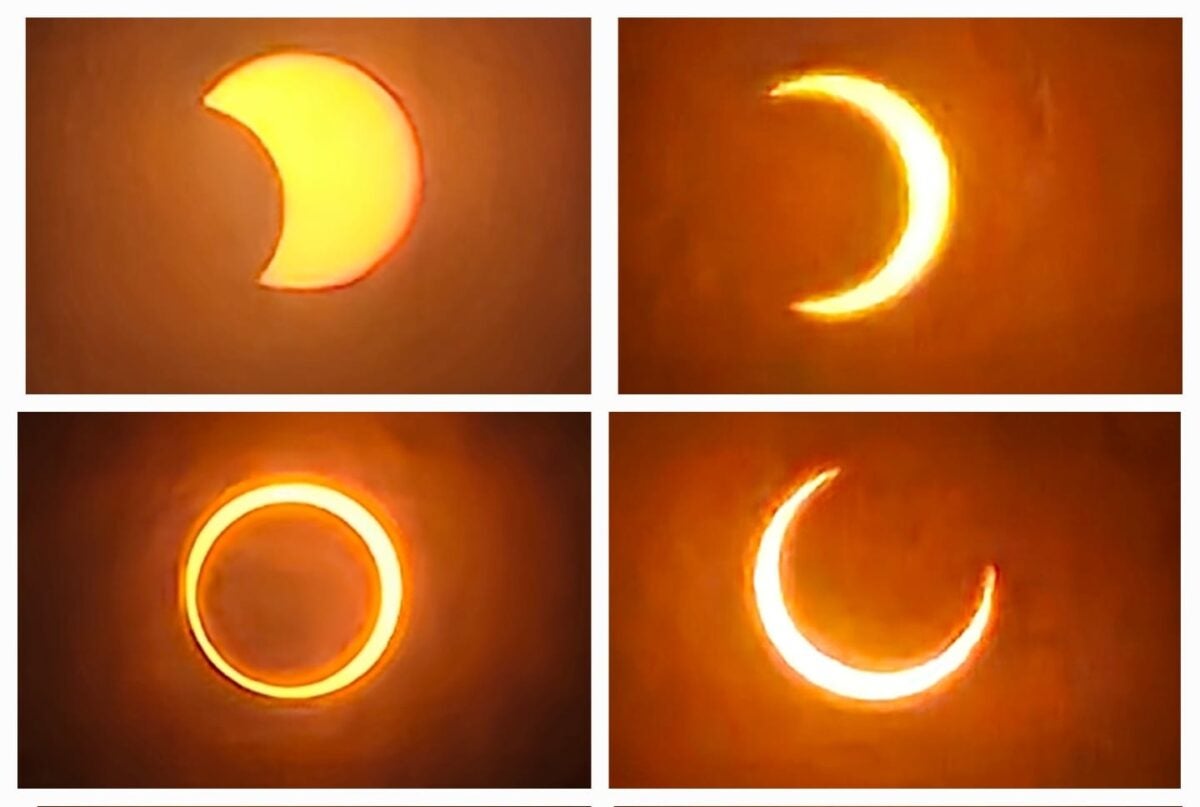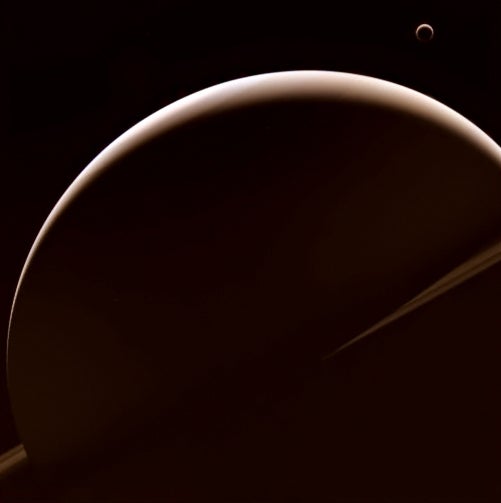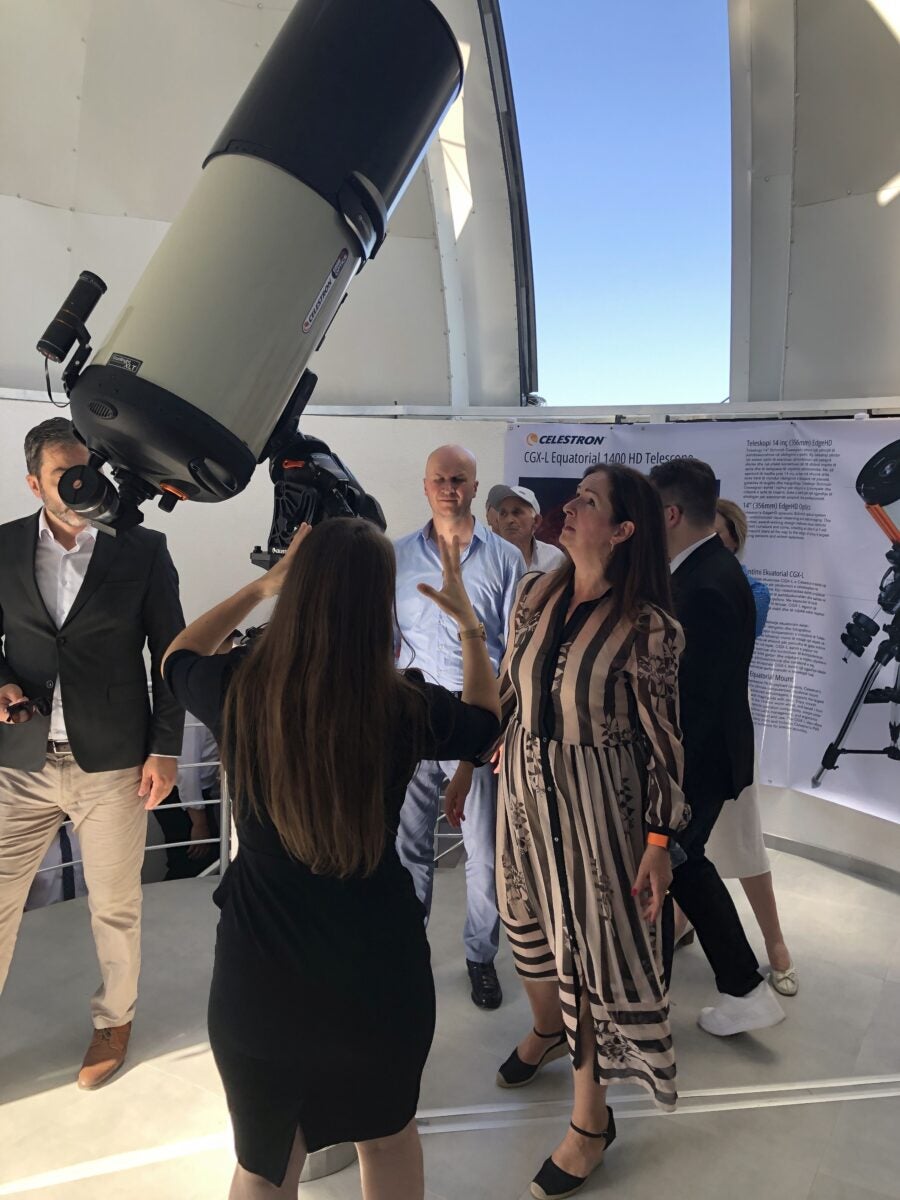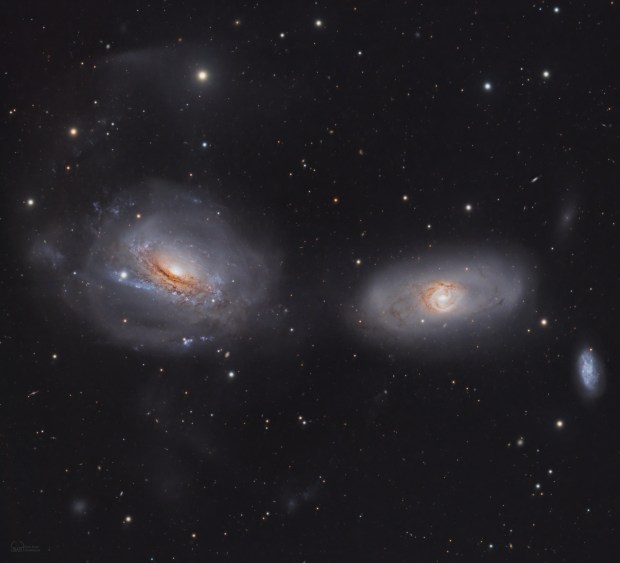The “ring of fire” eclipse of Oct. 2, 2024, was a spectacular celestial event — and Dave Eicher saw it from an equally spectacular setting.
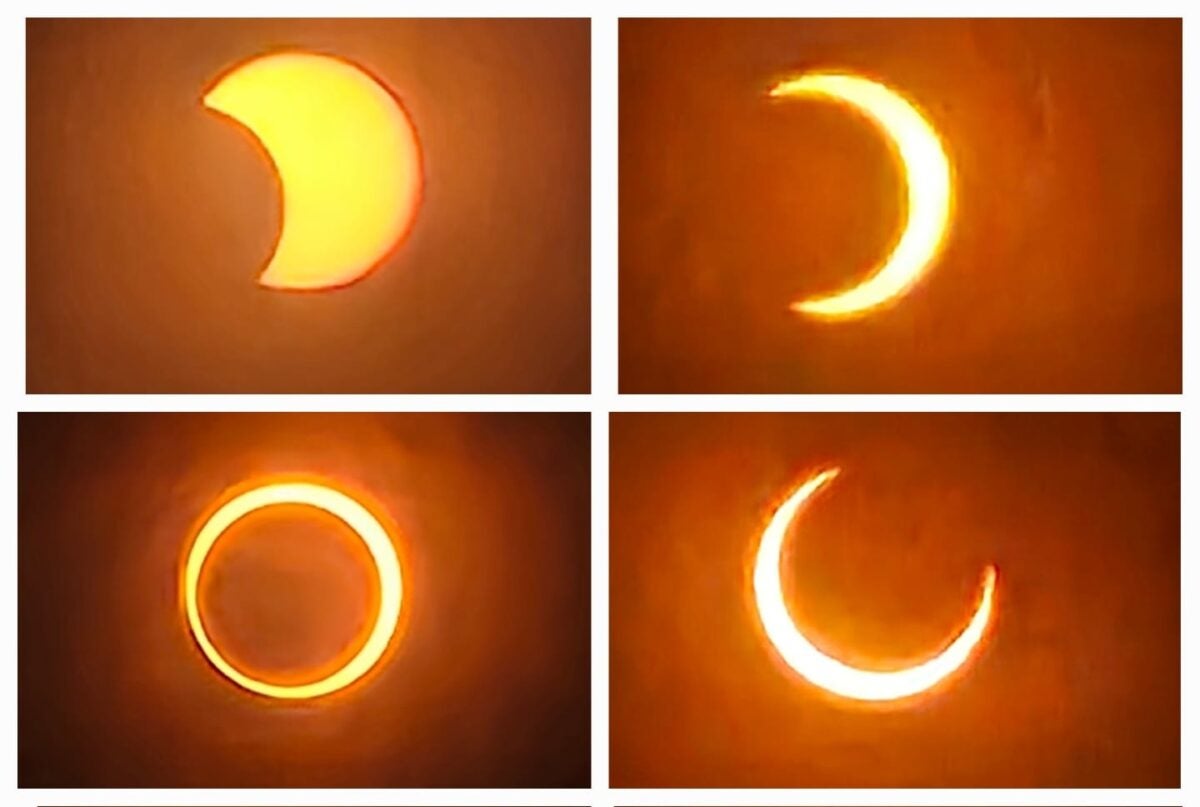
The annular eclipse experience was recorded here from Easter Island on October 2, 2024. Credit: Celine Chaya
Your editor is in the midst of a weeklong trip to a very remote place. A few days ago I departed Tucson and traveled to Santiago, Chile, where I met about 20 enthusiastic people who were charged up to see the annular eclipse that occurred today. We spent two days touring the marvels of Santiago, and nearby Valparaiso, which were spectacular. And then, yesterday, we made the 5½-hour flight westward from the Chilean coast to one of the most remote and storied places on the planet I had not yet been to, Easter Island.
Today we had one of those triple-play astronomical days that come along only very rarely. Our intrepid group, led by our tour partner Cengiz Aras of Eclipse Traveler, set off at 6 a.m. to a remote observing site on this small island. Arriving half an hour later, we set up opposite a long row of the famous Moai statues, created between approximately 1200 and 1500 C.E., and readied ourselves for sunrise.

The first spectacle of the day came in viewing a really pristine, dark morning sky. We had brilliant wintertime constellations high overhead — the glories of Orion, Taurus, Canis Major, and the rest of the gang. We had planets: dazzling Jupiter, Mars, and Saturn. We had splendors of the southern sky. It always amazes me to see the Orion Nebula and then look over, in the same sky, to see the Carina Nebula, dwarfing Orion in size and brightness. We had Crux still above the horizon, and the other deep-sky wonders of Carina. We had the Magellanic Clouds, hazy and well defined, like bright patches of the Milky Way chopped off and moved, and the great globular 47 Tucanae beside the SMC.
And the glories kept coming. As dawn began to brighten, we saw the current poster child of comets, C/2023 A3 Tsuchinshan-ATLAS, really bright at perhaps 2nd magnitude, rising in the east, among the row of Moai statues. It was an amazing astronomical treat that seemed like something out of a film, so dazzling was it.
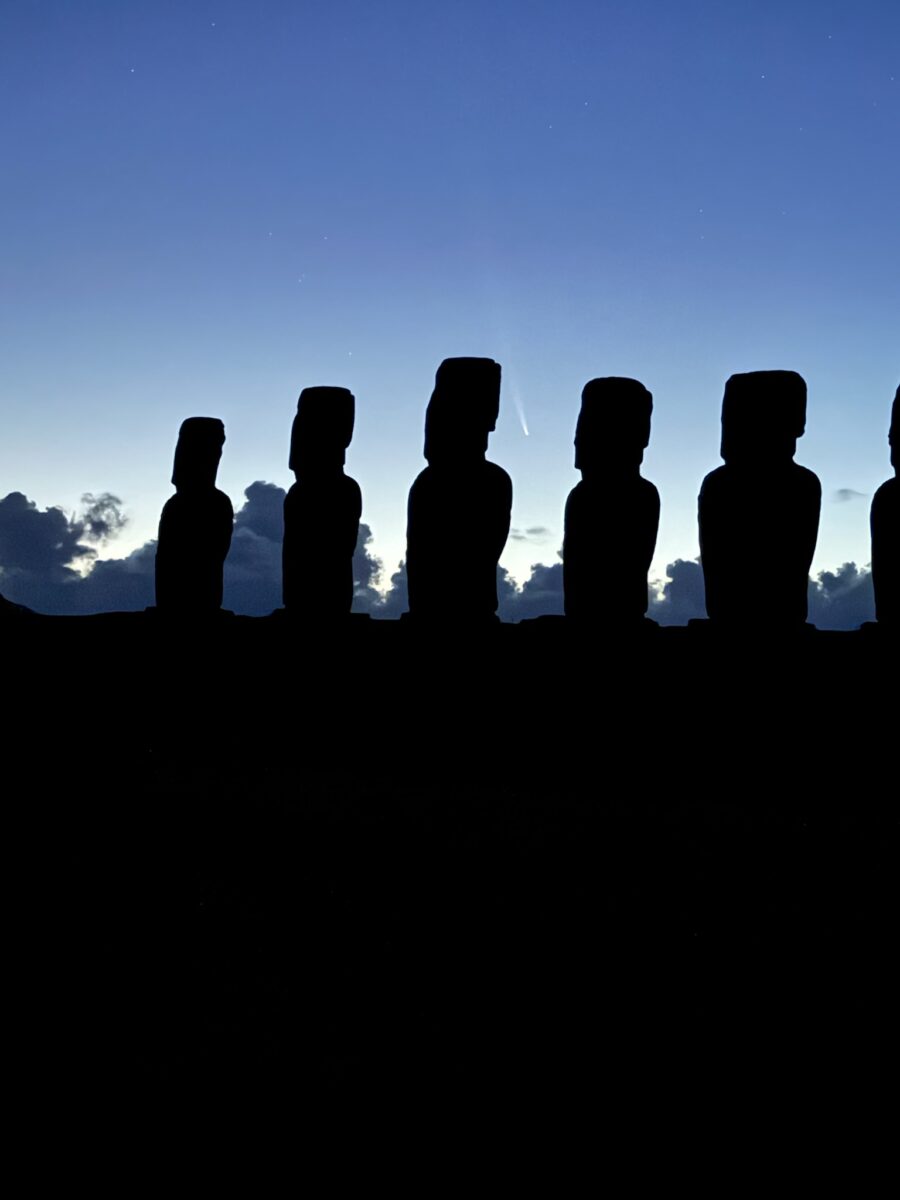
And we then returned, after the Sun rose, to our luxury hotel and prepared for a lecture I delivered on the eclipse and viewing. A few clouds hopped around the sky as we set off for the eclipse locality, but nothing too alarming. And sure enough, as 12:23 p.m. local time approached, we had a clear sky with a few passing small cumulus above us. We saw first contact, and we were in the midst of an annular eclipse, one in which the Moon was relatively distant and so made a somewhat small black disk creeping across the Sun. Once again, the precision of the timing impressed observers, and our hats were once again off to Johannes Kepler.
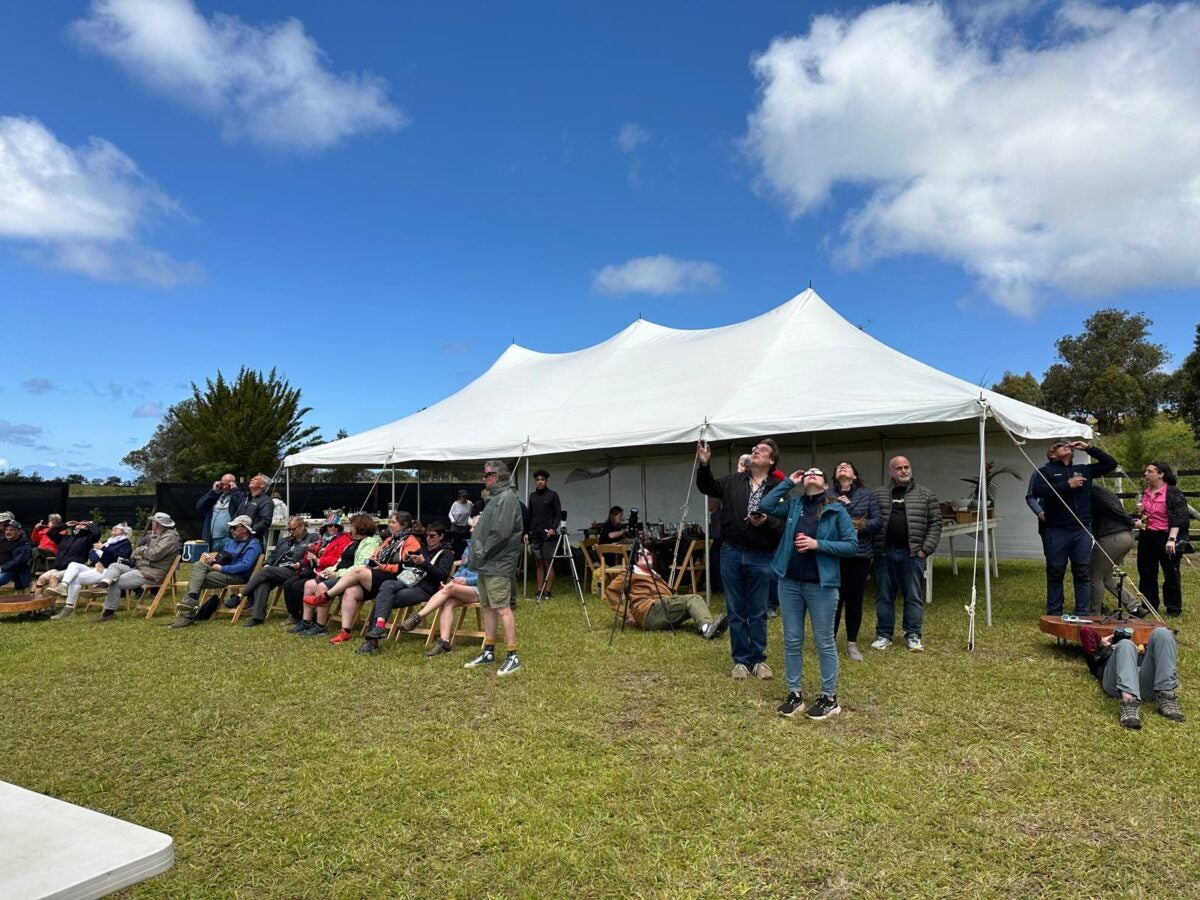
An hour and a half later, we witnessed the start of annularity, which gave us a “ring of fire” of sunlight around the Moon’s disk, and our annular eclipse lasted for 5 minutes 48 seconds — a long eclipse — before third contact began to restore the Sun, slowly. By nearly 4 p.m. local time the eclipse, obscuration covering 87 percent of the Sun, ended, and we could count an incredible triple-play of astronomical delights. The dark southern sky, the comet, and a great annular eclipse.
Seeing the many dozens of Moai has been amazing, along with other treasures of the island. We will continue to explore Easter Island for another day and a half and then head back to Santiago, another eclipse under our belt, another bright comet witnessed, and another session under the deep southern sky, which my old pal Bart Bok used to like to say “has all the good stuff in it.”
What a whirlwind eclipse tour it has been so far. More to come. I hope you saw the eclipse too, or at least some of the magnificent images recorded of this magical phenomenon!
David J. Eicher is Editor of Astronomy magazine, author of 26 books on science and history, and a member of the board of the Starmus Festival and of Lowell Observatory.
